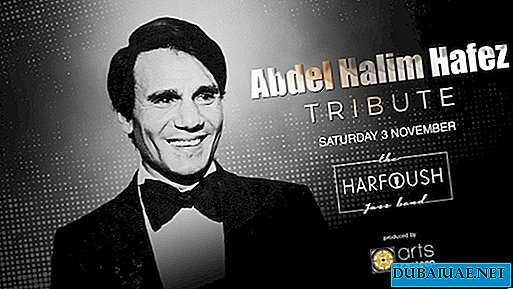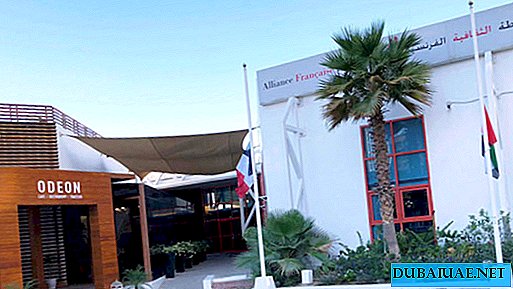Doctor, PhD, passionate traveler and our regular author.
LUXURY ARCHITECTURAL MONUMENTS, A SATURATED THEATER LIFE, WHICH PEARL ARE THE LA SCALA OPERA THEATER, BEAUTIFUL RESTAURANTS, A SHINY NIGHT CLUBS. And ANOTHER FANTASTIC SHOPPING IS A REAL PARADISE FOR MODEANERS AND FEMALE PEOPLE WITH THE VERY DIFFERENT TASES. MILAN IS NOT A CITY, IT IS A DREAM IN WHICH YOU CAN SIMULTANEOUSLY ENJOY ALL HUMAN WISHES. THIS IS A LIFESTYLE, WHICH SHOULD BE MUST BE TESTED.
Regional center with all the benefits
Milan is the capital of the Italian region of Lombardy. This is the second most populated city in Italy (about 2 million people). The location makes it the center of the Italian north, and the initiative of the inhabitants turns it into the most dynamically developing of all cities in the country (they say that in Milan there is one can for each church). Therefore, it is not surprising that it is in Milan that the most significant international exhibitions, conferences, symposia and congresses are held.
However, Milan attracts not only businessmen and admirers of the "sacred stones of Europe." The San Siro Stadium attracts football fans (Milan excels in an area that really matters to many Italians who win football from year to year). Fans of ultra-speed are attracted by the stadium in Monza, where the stages of the Formula 1 racing are held. Gourmets are waiting for dishes of a peculiar Milanese cuisine, nightlife lovers are attracted by a lot of entertainment for every taste: concert halls and cinemas, discos and bars with live music, typical neighborhoods, especially Navigli, which transform at night. And with the first rays of the sun, a real whirlpool is spinning again: cars honk merrily, trams move quickly, many bars and restaurants open their doors so that thousands of businessmen and office workers can enjoy a cup of cappuccino with a fresh brioche bun on the way to work. However, this flourishing city has to work hard to adequately maintain its reputation as Her Majesty Fashion's European capital, the center of business life, finance and media.
Milan is the industrial and financial center of the Italian region of Lombardy, which employs 720 thousand companies. In terms of GDP per capita (28,049 euros), the city is not inferior to London and Amsterdam. Residents of Milan are proud that it is here that world-famous car brands such as Alfa Romeo and Amaretto liquor are produced, as well as the most beautiful and convenient metro in Italy. Milan is a city where you can experience all worldly pleasures. Indeed, the city is more famous not for its appearance and the presence of attractions, but for its lifestyle.
Chasing fashion
 Shopping here becomes almost religious in nature. The city center is compact and convenient for passers-by. Milan is famous for trendsetters, shops along Monte Napoleone, and the Vittorio Emanuele Gallery in Piazza Duomo, which has a reputation as the oldest shopping center, which celebrated its 150th anniversary in 2011.
Shopping here becomes almost religious in nature. The city center is compact and convenient for passers-by. Milan is famous for trendsetters, shops along Monte Napoleone, and the Vittorio Emanuele Gallery in Piazza Duomo, which has a reputation as the oldest shopping center, which celebrated its 150th anniversary in 2011.
In Milan, the air itself and the atmosphere are saturated with the spirit of Her Majesty Fashion! The Italian empires of Armani, Valentino, Dolce and Gabbana, Versace, Jean-Franco Ferret, have long been demonstrating trends not only in European, but also in world fashion. Thanks to famous designers, it is Milan that is one of the largest and most respected capitals of the pestilential fashion.
Here, all year round, demonstrations of new fashion collections are held, attracting the whole high society of the world fashion industry here. Milan shows are no different from Paris, London and Roman fashion shows. The Milanese themselves say that "although Paris is considered a trendsetter, all fashion is cut and sewn in Milan." In contrast to the old Europe, which preaches a practical-sporty style, Milan surprises with a lot of people dressed elegantly and tastefully. In Milan, you can buy at affordable prices clothes, shoes and accessories made by very talented and skilled craftsmen who love their job.
People buy modern and fashionable items at affordable prices during discounts and seasonal sales. So, when it comes to individuality and the ability to think over a wardrobe with an exquisite and unique taste, you need to go directly to Milan. Only on the central streets of the city - Santo Spirito, Via Gesu and Sant Andre, as well as Buenos Aires Avenue, there are more than 360 stores that represent all the famous brands and fashion houses.
Do not be passive!
At any time of the year Milan is visited by many tourists. Here are numerous outstanding monuments, architectural masterpieces, churches and museums. And yet, despite the undeniable advantages, Milan is far from being the first city in the list of priorities for visiting tourists. Many of them prefer to see the hills of Tuscany and the canals of Venice, rather than feel the banal rhythm of life in a large industrial city in Italy. And this is not surprising, because in a country of medieval cities and skilled artisans, a large city with large corporations and wide avenues does not serve as an indicator of its true color. Milan really is more European than Italian city. However, even here the visitor- "Italofil" is sometimes waiting for pleasant surprises.
The modern essence of Milan hides under the magnificent graceful facades and in the magnificent palaces of the 19th century. This attracts lovers of upscale shopping and European sophistication, enjoying the status of "citizens of the world." This city is unusually liberal and modern. Here they forgive everything, except for one of the worst flaws for Milanese - passivity. To understand Milan you need to remember his story. It is well known that the first settlements on the site of a modern city date back to the beginning of the 4th century. BC e., when the Gallic tribes settled here. The toponym, which ultimately received the Latinized form “Mediolanum”, indicates the central position of the city - “a place in the middle”.
The city was repeatedly the capital of the Roman Empire and three times rose from the ruins after the raids of the barbarians. Milan joined the united Italy in the second half of the 19th century. Milan suffered a lot of troubles. In 536 AD e. - the attack is ready, in 1157 - the invasion of the Roman emperor Frederick Barbarossa.
Towards the end of the 19th century, the city turned into an undoubted “locomotive of the country” with a rapidly growing population. First of all, due to internal emigration. Secondly, after the civil war in Russia, the city sheltered many refugees who found here a "second homeland." Among them are the writer R. Kufferle, poet Prince G. Eristov, artists Boris and Geda Zuevs, a prominent figure of the Old Believers S. Ryabushinsky, physicist A. Eichenwald, scenographer N. Benois, archpriest Apollon Smorzhevsky and many others.
At the end of 1920, a Russian church arose in Milan in honor of St. Nicholas the Wonderworker is the only one in Italy established by white emigrants. The city was "Russian community with a library." A socially and politically active city also became the scene of the emergence of Italian fascism: it was in Milan on March 23, 1919, Benito Mussolini founded his first "fascia" (translated from Latin "bunch" - hatchets of ancient Roman legionnaires, symbol Roman administration), but it was also here, in Piazza Loreto in April 1945, that the history of the dictatorial regime ended (the previously shot duce was hanged in this city square). The greatest losses and devastation in Milan were caused by World War II, when in 1943 the ruthless bombing of Anglo-American aviation destroyed 80% of the city territory, as well as the traditional production of Pirelli, Breda, Alfa Romeo.
But even in these sad times, the Milanese showed their well-known will to work. In the 1950s, Milan began to revive, and with it the whole country, revealing the so-called “Italian miracle” to the world, when Italy, brought to its knees as a result of military defeat, broke out among the leading world powers.
 Birthday in Milan
Birthday in Milan
When planning a trip to Milan on my birthday, as well as on New Year's and Christmas days, I dreamed of imbibing myself with the spirit and grandeur of the three world masterpieces: the highest symbol of the city - the famous Duomo Cathedral in Milan (it is considered to be the “eighth wonder of the world”); the Basilica of Santa Maria delle Grazie, where in the refectory of the church turned into a museum is the famous "Last Supper" by Leonardo da Vinci and the internationally recognized La Scala Theater, which featured young Mozart, Maria Callas and other celebrities, as well as many current world stars opera scene.
My acquaintance with Milan began on a cool, rainy, cloudy day in December at Duomo Square. This is a symbolic place for the city, in the center of which there is a spectacular equestrian monument to the unifying king, Victor Emmanuel II, by Ercole Rosa (1878). On the pedestal of the monument, in accordance with the tastes of the era, several bronze bas-reliefs are placed illustrating the struggle of Italian patriots for liberation from the Austrian yoke.
Late Gothic Cathedral Duomo, all lined with marble, is dedicated to the Nativity of the Virgin Mary. Its dimensions are striking: 158 meters in length, 93 meters in width and 109 meters in height, with a total area of 11 thousand square meters.
Elevation and walking to the roof of the cathedral is organized: from there, from the terraces and the roof of the building, you can enjoy both beautiful views of the city and its environs (right up to the Alps), and the architecture of the cathedral itself. Visitors to the Duomo (by the way, in Spanish, the word “duomo” means “cathedral”) meets a grandiose space consisting of five naves. 52 gigantic beam columns, crowned by a series of niches with statues of saints, over which statues of prophets were still placed, hold high cross arches.
In the icon case near the vaults, the holy nail venerated by the Milanese from the Crucifixion of Christ is kept. According to legend, the emperor Theodosius presented it to St. Ambrose the Mediolansky: the Holy Nail, which was first stored in the Church of St. Thecla in 1461, was placed in the main altar as one of the main relics. The main altar, consecrated in 1418 and marked with a spire in the form of a temple, crowned with a statue of Christ in glory, inside of which is a relief carried by four bronze angels.
In one of the sacristies of the cathedral, the most important shrine is kept on display at the main altar on the occasion of major holidays - the so-called Ark of the Apostles. Made in 1622 by order of Cardinal Federico Borromeo, it has the shape of a tree, whose branches of silver diverge in spirals and support crystal ampoules with particles of relics of all twelve apostles.
The construction of the Cathedral (Duomo) in Milan began in 1386 at the initiative of Bishop Antonio da Saludzo. The result was a true symbol of the city and one of the most perfect examples of Italian Gothic. In general, the work on the construction of the cathedral lasted several centuries: in 1769, its main spire was completed, which caused widespread admiration; in 1774, the 104-meter Madonina crowning spire (statue of the Virgin Mary) was erected. In the years 1810-1813. at the request of Napoleon, the facade was completed.
In 1858, the old bell tower of the cathedral was dismantled; in 1906, bronze doors with theotokic subjects were built in the central porter from the inside. In the twentieth century, decorative and restoration work continued here. Few of the Italian churches have been built for so long and with such difficulties as the Milan Cathedral. However, despite this, in the end, he became characterized by the unity of style and harmony of forms, as well as the stunning and inexhaustible imagination of his decor: hundreds of large spiers and many small ones that rise everywhere seem like a fabulous forest inhabited by sculptures, stone monsters and characters from legends. The majestic Duomo Cathedral has become a true treasury of Christian art: there are more than two thousand carvings on the facades alone. Sometimes it is called the "eighth wonder of the world."
Gallery and Theater
Having left the Duomo square and passing through the triumphal arch in the center, we found ourselves in the famous Milan gallery named after the unifying king Victor Emanuel II - the most popular "meeting place" for citizens and visitors. In the second half of the 19th century, the city authorities decided to connect the square of the cathedral, Piazza Duomo, with Garden Avenue, now Via Manzone, where the La Scala Theater stands. So the idea of laying a street covered with galleries came up. Already in 1867, the gallery was inaugurated in the presence of Victor Emmanuel II, who in those years actively unified disparate Italy (Rome was still papal, and the capital of the kingdom was temporarily located in Florence).
 The gallery has become the world's first shopping center in the modern sense of this expression. A symbol of a united Italy, the building caused heated debate: some Milanese warmly welcomed it as an innovative work full of interesting decor, while others criticized it for being too pompous. All floors and the dome were destroyed by bombs in 1943, but then restored. Currently, the gallery has shops, bars and restaurants. The mascot for the townspeople and guests of Milan was a bull laid out under a dome on the floor, near which they make wishes.
The gallery has become the world's first shopping center in the modern sense of this expression. A symbol of a united Italy, the building caused heated debate: some Milanese warmly welcomed it as an innovative work full of interesting decor, while others criticized it for being too pompous. All floors and the dome were destroyed by bombs in 1943, but then restored. Currently, the gallery has shops, bars and restaurants. The mascot for the townspeople and guests of Milan was a bull laid out under a dome on the floor, near which they make wishes.
Passing the Victor Emanuel Gallery, we approached the La Scala Theater. There used to be a virgin church in this place, built in 1381 at the request of the wife of Bernabo Visconti, the Duchess of Beatrice Regina della Scala, and Santa Maria della Scala named after her. The abolished church gave way to a theater, the construction of which began in 1776.
The theater officially opened twice: for the first time on August 3, 1978 with the production of the opera "Recognized Europe" by Antonio Salieri; in the second, on May 11, 1946, with a large gala concert led by Arturo Toscanini: in this way, the Milanese celebrated the restoration of the theater after heavy wartime damage.
The world-famous La Scala theater has always attracted the best musicians, conductors, singers, stage designers. Bellini, Verdi, Puccini - these are just a few of the names of composers who often preferred the Milanese scene to stage their premieres; many current stars of the world opera scene got a “ticket to life” here. Of the domestic masters, N. A. Benois worked here as the chief set designer for several decades of the last century. Between 2001 and 2004 under the leadership of architect Mario Bott, the theater carried out restoration and modernization of the building. Botta has modernized the scene on which three actions can now take place simultaneously. From the square, two new buildings with a beautiful appearance are visible behind the solemn facade of Piermarin. The theater houses the La Scala Theater Museum, transformed in 2007, it contains relics and art objects related to the history of the theater and its heroes: from Toscanini to Verdi and Rossini.
Museum visitors are greeted by a very dense exposition: the walls are completely hung with portraits of composers, singers, actors (including dramatic ones), and the halls are covered with busts, showcases with medallions and even with such things as posthumous masks, casts of hands, conducting sticks. From the premises of the museum you can go to one of the loggias of the theater.
Of particular interest to the Russian visitor is the magnificent full-length portrait of Judith Pasta in the role of Anna Boleyn, written by Karl Bryullov (the artist often visited Milan, using the patronage of Countess Julia Pavlovna Samoilova, stepdaughter of Milanese Giulio Litta, who became a prominent Russian statesman). Among other interesting exhibits is the preparatory model of the monument to Giacomo Puccini, made in 1925 by Italian-Russian sculptor Paolo Trubetskoy and, in the same room, a portrait of Rudolf Nureyev, who often performed in Milan (the work of the artist Attilo Melo). The foyer of the theater, lined with white marble with neoclassical decor, made a special impression during the days of performances, especially the premiere filled with an elegant audience. There are busts of Rossini, Bellini, Verdi and a bust of Stendhal.
The horseshoe-shaped hall has five tiers, with a central royal lodge and a gallery, which is usually occupied by the most sophisticated music lovers, ready for a biased trial. Magnificent scenery and stucco molding amaze, and the stage, framed by giant colonnades, has become one of the largest in Italy. The La Scala Theater closes the square of the same name, opposite the Palazzo Marino. In 1872, a monument to Leonardo da Vinci was erected in the center of Piazza della Scala, with statues of his students at the pedestal (sculptor Pietro Magni).
I was lucky to get to the La Scala Theater on December 7th for the opening of the season, according to a long-established tradition, this celebration is held on the day of St. Ambrose, the patron saint of Milan. Richard Wagner's opera Valkyrie was selected for the premiere. The leading role was played by the opera star Waltraud Meyer (Siglinda), and the two main parts were performed by Russian artists Ekaterina Gubanova (Frīte) and Vitaly Kovalev (Votan).
The La Scala Theater has always been famous for its punctuality. Immediately after the third bell, the curtain was opened, and all the audience in the hall plunged into the world of Wagnerian heroes for 4.5 hours. The attitude to Wagner's productions at all times, both among professionals and the audience, was controversial. The choice of this particular part of the Ring of the Nibelungen trilogy was also unusual for the Italian theater.
The opera came with two intermissions. My impressions exceeded all expectations.… I want to express the enthusiasm with the words of the great Stendhal, who wrote in his diary: “I’m hurrying to this first theater in the world (Scala): there is still Tesea di Bronzo (“ Bronze Head ”), and I can completely enjoy the performance ... This theater breathes grandeur and luxury: here every minute you see at least a hundred ordinary singers or extras dressed like the actors in the first roles dressed in France. For one of the last ballets, eighty-five costumes were made of velvet and satin. Huge costs La Theater C kala is a salon where the whole city happens. People from society only meet there: there are no open receptions. "See you in Skala," they say to each other, making dates for any reason .... On September 26, 1816 I leave Skala. By God My enthusiasm does not diminish in the least.
I consider Skala to be the first theater in the world, for his music gives the most pleasure. There is not a single lamp in the hall. It is lit only by light reflected from the scenery. It is impossible to even imagine anything more majestic, more luxurious, more impressive than architectural forms. Tonight the scenery was changed 11 times "...
Immersed in the atmosphere of the La Scala theater, his story involuntarily passed before me, the images of famous opera stars performing on this stage - Enrico Caruso, Maria Callas, Fedor Chaliapin, Leonid Sobinov. For the whole world, Maria Callas has become the personification of the La Scala theater. In this theater, the legendary Callas never missed a single performance. It was nice to know that in the year of the 300th anniversary of the theater, the first Russian ballerina awarded the honorary title “Etoile” (“Star”) was Svetlana Zakharova in April 2003.
Touch of secrecy
And finally, the culmination of my trip to Milan was a visit to the Dominican monastery of Santa Maria della Grazie, in the refectory of which is one of the most revered and famous frescoes in the world - The Last Supper by Leonardo da Vinci. In 1980, the entire monastery complex became the first world heritage site in Italy. It is necessary to obtain permission in advance in order to see with your own eyes the most famous mural in the history of art. To do this, a steady stream of visitors arrives in Milan from all over the world.
The Last Supper was commissioned by Leonardo da Vinci, the ruler of Milan, Ludovico Moreau, in the general project of renovation of the monastery of Santa Maria della Grazie. Leonardo worked on this work from 1494 to 1497. It was not executed in the usual way of painting walls - fresco for the Renaissance, the artist chose a letter "dry" tempera, which allowed him to work with maximum freedom. Although the theme of the supper - communion was traditional for the monastic refectory, especially in Florence, the expressive drama of the scene of the Last Supper by Leonardo makes it innovative.
Da Vinci chose for the image at the first stage exactly that moment, which for many centuries has been the object of a figurative interpretation: when Christ hands out bread to Judas, pointing to him in this way as a prophet. In full accordance with the reading of the episode in the Gospel of John (13, 21-26) "Having said this, Jesus was indignant in spirit, and testified, and said: Verily, verily I tell you, one of you will betray Me. Then the disciples looked around at each other wondering whom He was talking about. But one of His disciples, whom Jesus loved, was lying at the bosom of Jesus. Simon Peter made a sign to him to ask who he was talking about. He, falling to the bosom of Jesus, said to Him: Lord ! Who is this? Jesus replies: the one to whom I, having dipped a piece of bread, will serve. And, having dipped a piece, I served Judah Shem to Oncariot. "
Leonardo prepared carefully and long for the Milan painting. The Last Supper attracted him not with its dogmatic content, but with the opportunity to unfold a great human drama in front of the viewer, show various characters, reveal the spiritual world of a person, and accurately and clearly describe his experiences. He took the Last Supper as a scene of betrayal and set himself the goal of introducing into this traditional image that dramatic beginning, thanks to which it would acquire a completely new emotional sound. This is the most mature and finished work of Leonardo. In painting, the master avoids what could replace the main course of the action depicted by him.
In the center, he places the figure of Christ, highlighting it with the lumen of the door. He deliberately removes the apostles from the Savior in order to further emphasize his place in the composition. A complex composition with a sophisticatedly constructed perspective once again demonstrates the genius of the coryphaeus of the Renaissance: the space of the painting is “lit” by three windows in depth, which made it possible to use the chiaroscuro's favorite (receiving chiaroscuro image) to its full potential. In the center of the long laid table is Christ, whose figure clearly divides the apostles into four groups, three in each. He makes the table small, and the refectory simple and simple. This gives him the opportunity to focus the viewer's attention on figures with tremendous plastic strength. In all these techniques, a deep determination of the creative idea is hidden, where everything is balanced and taken into account. The main task that Leonardo set for himself in The Last Supper was a realistic transmission of the most complex psychological reactions to the words of Christ: "One of you will betray me." Giving in the images of the apostles complete human characters and temperaments, Leonardo makes each of them react in his own way to the words spoken by Christ.
It was this subtle psychological differentiation, based on the diversity of faces and gestures, that struck Leonardo's contemporaries more than anything else. He boldly united Judas in one group with all the apostles, but at the same time gave him such features that allow him to be immediately identified among the twelve disciples of Christ. Contemporaries of the master took Leonardo's Last Supper as new in art.
So sorry, but you need to leave ....
Leaving Milan in the twentieth century - the capital of business, fashion and design, the city of art and culture, the crossroads of knowledge and innovations, I am convinced that this metropolis carefully preserves its outstanding millennium past, but at the same time it is able to change and update. The diverse urban landscape, exciting and attractive, shows evidence of a brilliant past: from the time of the late Roman Empire to the medieval commune, from the Dukes of Visconti and Sforza to Spanish rule, from the rule of the Habsburgs to the Napoleonic splendor, from the industrialization of the post-war years to the present day.
In 1957, Milan was declared the twin city of Leningrad. Having discovered this city for myself, I feel that I want to return here more than once .... To catch the new sound of a symphony woven from the world of music, poetry, the spirituality of art, all the splendor of this enchanting city in the heart of Europe.










